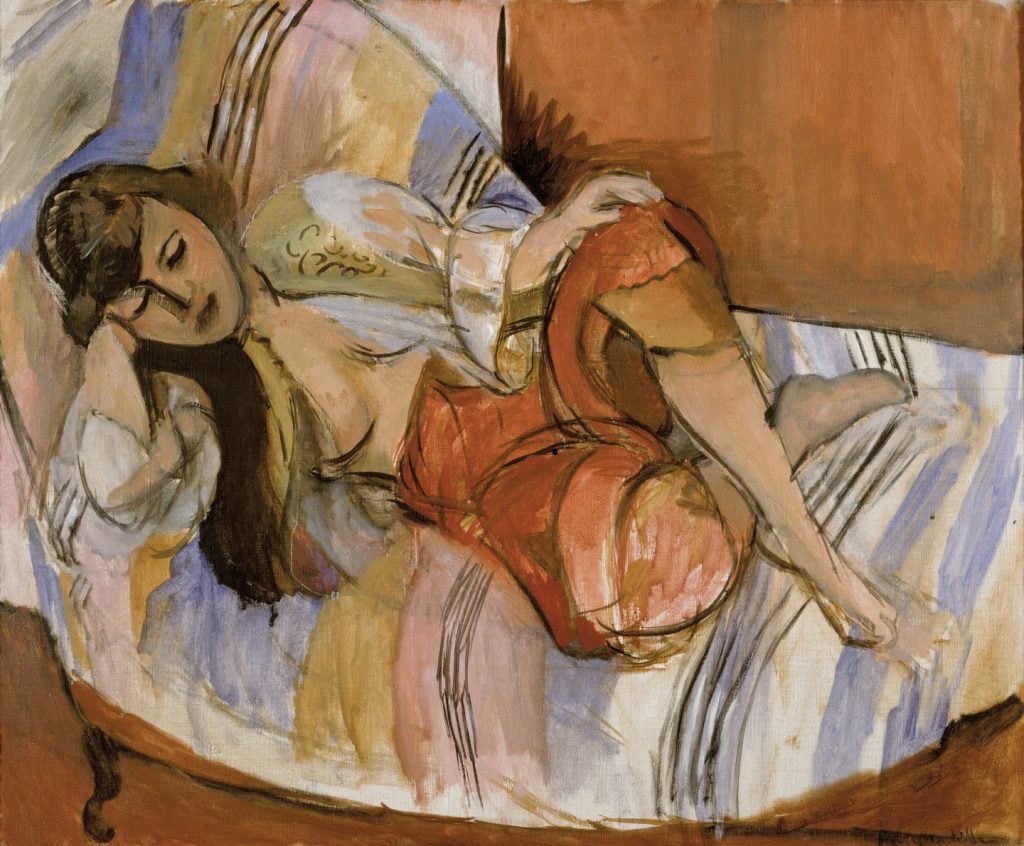Museums & Institutions
Stedelijk Museum Restitutes Matisse Painting Sold Under Duress During WWII
The painting will be returned to the heirs of a Jewish textile manufacturer Albert Stern.

The painting will be returned to the heirs of a Jewish textile manufacturer Albert Stern.

Adam Schrader

A painting by Henri Matisse that has been in the collection of the Stedelijk Museum since 1941 will be returned to the heirs of a Jewish textile manufacturer who was forced to sell the work while fleeing Nazi Germany during World War II.
The painting, titled Odalisque (1920/1921), depicts a woman reclining on a day bed wearing a sheer top with her eyes closed. The title refers to an enslaved woman or concubine in a harem and was part of a series inspired by the artist’s trip to Morocco in 1912.
It is being returned to the heirs of the Albert Stern after the Dutch Restitutions Commission published its conclusion that it was “sufficiently plausible” that Stern, who had fled with his family from Germany around 1936, was forced to sell the work to again escape from Nazi occupation of the Netherlands, the Stedelijk Museum announced in a news release.
Before the Nazis took power, Stern and his brother Siegbert had helped establish the women’s clothing brand Graumann and Stern in 1888. With his wife Marie, Stern became a patron of the arts and amassed a collection that included works by Vincent Van Gogh and Edvard Munch, according to The New York Times.
“In Amsterdam, Albert and Marie Stern made repeated efforts to obtain visas for themselves, their children, and grandchildren,” the Commission for Looted Art in Europe, which represented the Stern grandchildren, said in a statement.
The family was unsuccessful in their attempts to move to the United States, Cuba, Mexico, Uruguay, Brazil, Haiti, and the Dominican Republic. With the help of Lieuwe Bangma, Stern sold the painting directly to the Stedelijk Museum in July 1941.
“Since the Stern family needed the money to flee, the Restitutions Committee ruled that this was an involuntary loss of possession due to circumstances directly related to the Nazi regime,” the museum wrote in its statement.
Stern was ultimately captured by the Nazis, imprisoned at an internment camp at Laufen Castle in Bavaria, Germany, where he was declared dead on January 18, 1945. The camp was liberated by American forces just months later in May 1945.
His son Erich was killed at Auschwitz in October 1944 at the age of 48 and his son Rudolf was murdered in Buchenwald in March 1945 at the age of 33. Rudolf’s two children were deported by the Gestapo to Theresienstadt in April 1944 at the ages of just five and 16 months. With Stern’s wife, Marie, they were the only members of the family to survive.
“The return of the Matisse is a moving and overwhelming moment for us all,” the family said in a statement. “Our grandparents loved art and music and theater; it was the center of their lives. In the few years we had with our grandmother after the war, she transmitted that love to us, and it has enriched our lives ever since.”
The heirs said that the Matisse painting went through the same journey from Berlin to Amsterdam as their grandparents but stopped at the Stedelijk “with almost no acknowledgement from whence it came for 80 years.”
“The family has carried the scars of its unbearable and tragic history alone. Now, finally, thanks to the Dutch Restitutions Committee, this is being acknowledged. The painting is being returned to us, the rightful owners, and with it our own history,” the family said. “The decision has provided symbolic justice to our grandfather. We want to thank everyone involved in the decision.”
Rein Wolfs, director of the Stedelijk Museum, revealed in a statement that the institution has faced questions about the provenance of the work since it began to research the provenance of its own collection in 2013. The museum had submitted the case for restitution consideration jointly with the Stern heirs, he said.
“This artwork represents a very sad history and is connected to the unspeakable suffering inflicted on this family,” Wolfs said. “The ruling of the Restitutions Committee does justice to this history, and we naturally follow their binding advice.”